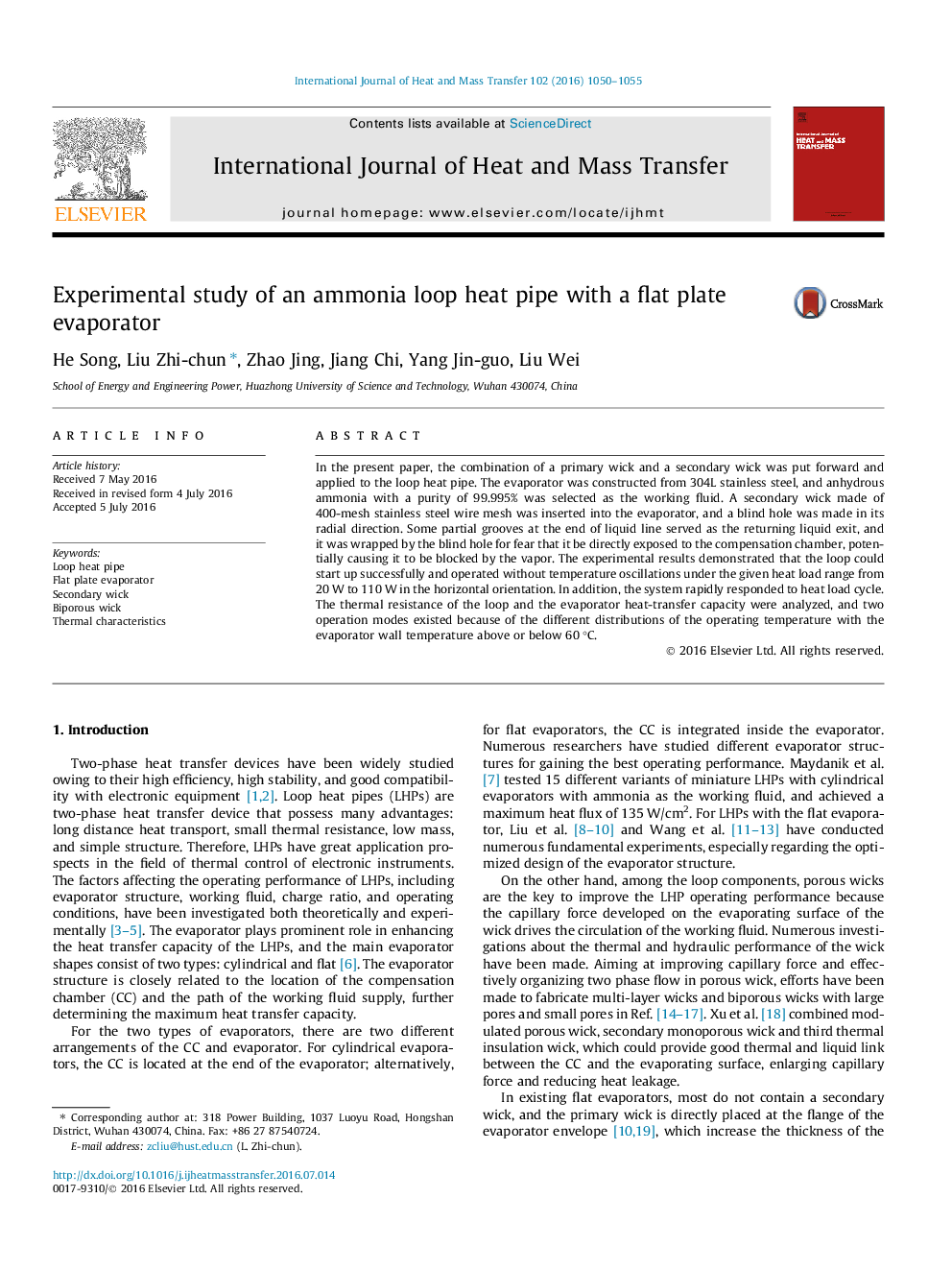| Article ID | Journal | Published Year | Pages | File Type |
|---|---|---|---|---|
| 7055369 | International Journal of Heat and Mass Transfer | 2016 | 6 Pages |
Abstract
In the present paper, the combination of a primary wick and a secondary wick was put forward and applied to the loop heat pipe. The evaporator was constructed from 304L stainless steel, and anhydrous ammonia with a purity of 99.995% was selected as the working fluid. A secondary wick made of 400-mesh stainless steel wire mesh was inserted into the evaporator, and a blind hole was made in its radial direction. Some partial grooves at the end of liquid line served as the returning liquid exit, and it was wrapped by the blind hole for fear that it be directly exposed to the compensation chamber, potentially causing it to be blocked by the vapor. The experimental results demonstrated that the loop could start up successfully and operated without temperature oscillations under the given heat load range from 20 W to 110 W in the horizontal orientation. In addition, the system rapidly responded to heat load cycle. The thermal resistance of the loop and the evaporator heat-transfer capacity were analyzed, and two operation modes existed because of the different distributions of the operating temperature with the evaporator wall temperature above or below 60 °C.
Related Topics
Physical Sciences and Engineering
Chemical Engineering
Fluid Flow and Transfer Processes
Authors
He Song, Liu Zhi-chun, Zhao Jing, Jiang Chi, Yang Jin-guo, Liu Wei,
